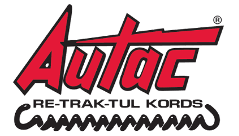Extension cords are an integral part of our modern lives, allowing us to power our devices and equipment from a distance. Among the various types of extension cords, recoil extension cords stand out as a testament to innovation and convenience. In this article, we will take a journey through time to trace the history of recoil extension cords, highlighting significant developments and innovations that have shaped this remarkable product category.
Early Beginnings
The concept of the Evolution of recoil extension cords can be traced back to the mid-20th century when engineers and inventors sought to address the inconveniences associated with traditional extension cords. The primary challenge was managing cord length efficiently while preventing tangling and damage.
1950s – The Emergence of Recoil Mechanisms
The first Evolution of recoil extension cords emerged in the 1950s, featuring spring-loaded mechanisms that allowed the cord to retract automatically. This innovation marked a significant advancement in cord management, making it easier for users to store and transport extension cords without the hassle of manual winding.
1970s – Introduction of Cord Locking Mechanisms
In the 1970s, the Evolution of recoil extension cords began to incorporate cord-locking mechanisms. These mechanisms allowed users to extend the cord to the desired length and lock it in place, providing greater flexibility and preventing the cord from retracting prematurely.
1990s – Improved Durability and Safety Features
As the demand for recoil extension cords grew, manufacturers focused on improving durability and safety features. This decade saw the introduction of reinforced cords, impact-resistant casings, and integrated circuit breakers to protect against overloads.
2000s – Integration of Stowaway and Multi-Outlet Features
In the 2000s, recoil extension cords evolved further with the integration of stowaway and multi-outlet features. Users could now conveniently store the cord within the casing when not in use, reducing the risk of damage. Additionally, some models offered multiple outlets to power multiple devices simultaneously.
Present Day – Advanced Materials and Smart Technologies
In the present day, recoil extension cords continue to evolve. Advanced materials and smart technologies have improved their performance and user-friendliness. Cord casings are now made from durable and lightweight materials, and some models offer Wi-Fi connectivity for remote control and monitoring.
The Future – Sustainable and Eco-Friendly Solutions
Looking ahead, the future of recoil extension cords is likely to include sustainable and eco-friendly solutions. Manufacturers are exploring materials that are not only durable but also environmentally responsible. Additionally, innovations in energy efficiency and renewable power sources may play a role in shaping the next generation of recoil extension cords.
Recoil Extension Cords in DIY and Professional Settings
Extension cords are a fundamental tool in both DIY (Do It Yourself) and professional settings, serving as the lifeline that delivers power where it’s needed most. Among the various types of extension cords, recoil extension cords have gained recognition for their convenience and versatility. In this article, we’ll explore how recoil extension cords are employed in real-life applications across DIY projects and professional construction work, showcasing their adaptability and practicality.
DIY Projects: Powering Creativity at Home
- Outdoor Landscaping: When transforming a backyard or garden, DIY enthusiasts often rely on recoil extension cords to power lawnmowers, electric trimmers, and outdoor lighting. The automatic retraction feature minimizes tripping hazards and keeps the workspace tidy.
- Home Renovations: DIYers tackling home renovations find recoil extension cords indispensable. Whether it’s running power tools in the workshop or providing electricity to newly installed fixtures, these cords offer the flexibility to reach every corner of the project.
- Holiday Decorations: During festive seasons, recoil extension cords simplify the process of setting up outdoor decorations and lighting displays. Their automatic retraction ensures a quick and hassle-free cleanup once the festivities are over.
- Garage Workshops: For those with garage workshops, recoil extension cords keep workbenches clutter-free. Cord locking mechanisms allow users to extend the cord to the required length and secure it in place while working on various projects.
Professional Construction Work: Powering Efficiency on the Job Site
- Construction Sites: In the realm of professional construction, time is money. Recoil extension cords are frequently used to power heavy-duty tools like circular saws, drills, and welders. Their durability and resistance to wear and tear make them a reliable choice in demanding environments.
- Maintenance and Repairs: Electricians and maintenance professionals rely on recoil extension cords to access hard-to-reach electrical outlets. The cord’s ability to retract with minimal effort ensures swift and efficient repairs.
- Painting and Finishing Work: Recoil extension cords are valuable for painters and finishers working on large surfaces. They provide a consistent power supply for sanders, paint sprayers, and lighting, helping achieve professional-quality results.
- Stage Productions: In the world of entertainment, recoil extension cords are used to power lighting and sound equipment on stage. Their compact design and cord management features help create a safe and visually appealing performance environment.
Case Studies: Real-Life Examples
- Home Improvement Hero: Sarah, a DIY enthusiast, used a recoil extension cord to power her electric paint sprayer during a home renovation project. The cord’s locking mechanism allowed her to adjust the length precisely, making painting a breeze.
- Construction Efficiency: On a construction site, the Foreman, Mark, equipped his team with recoil extension cords to power their tools. The cords’ automatic retraction saved valuable time, enabling them to meet project deadlines consistently.
- Outdoor Oasis: Landscape designer Emma used recoil extension cords to install a custom outdoor lighting system for a client’s garden. The cords’ weather-resistant design ensured the lights functioned flawlessly, enhancing the landscape’s beauty.
Recoil extension cords have proven their worth in diverse settings, from DIY endeavors to professional construction sites. Their adaptability, safety features, and automatic retraction mechanism have made them a favorite tool for powering projects and tasks efficiently. As technology continues to advance, we can expect further innovations in recoil extension cords, further enhancing their performance and usefulness across various applications.
Conclusion!!
In conclusion, recoil extension cords have come a long way since their inception in the 1950s. What began as a solution to the inconvenience of traditional extension cords has evolved into a category of products that prioritize convenience, safety, and durability. As technology continues to advance, we can expect further innovations in recoil extension cords that align with the needs of modern users while considering environmental sustainability. These cords are a testament to the ongoing evolution of everyday products that make our lives easier and more efficient.




Recent Comments